CATIA CAD platform 3DEXPERIENCE helped recreate the warship of Leonardo da Vinci
Many mechanical engineers are inspired by the talent of Leonardo da Vinci - a “universal man” who successfully combined art, science and engineering, anatomy and medicine in his activities.
Today, his works can be seen in such famous museums as the Louvre Museum in Paris and the Uffizi Gallery in Florence. It was they who prompted Alain Duguss, PLM CATIA V5 / V6 expert at Dassault Systèmes, to participate in the 3DEXPERIENCE Lab project “Open Codex” , dedicated to the virtual recreation of Leonardo’s inventions.

Among the many sketches from the master’s heritage (an aircraft, a tank, a parachute, a helicopter, etc.), in the Italian archive of Piazza della Scala, Duguss found something interesting: a top view and several types of components of the structure, very similar to a warship.
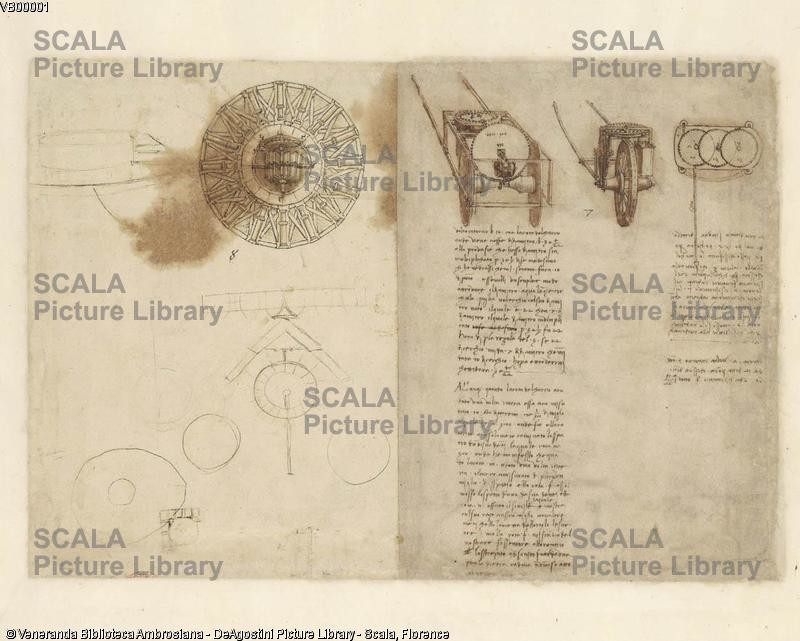
However, these species do not give a final idea of how da Vinci saw the realization of his brainchild. To visualize the ship in 3D, it was decided to combine the found sketches with sketches of a similar model of the tank.

We will briefly talk about this project, which was carried out in CATIA and 3DEXCITE software products on the Dassault Systèmes 3DEXPERIENCE platform.
Concept. The first impression from the top view was that it was a prototype of a modern tank - but if you look closely at the central part, you can see the wheels with paddles, that is, Leonardo da Vinci probably conceived the structure as a means of transportation on water. 16 guns on board unequivocally confirmed that the ship was designed as a combat ship.
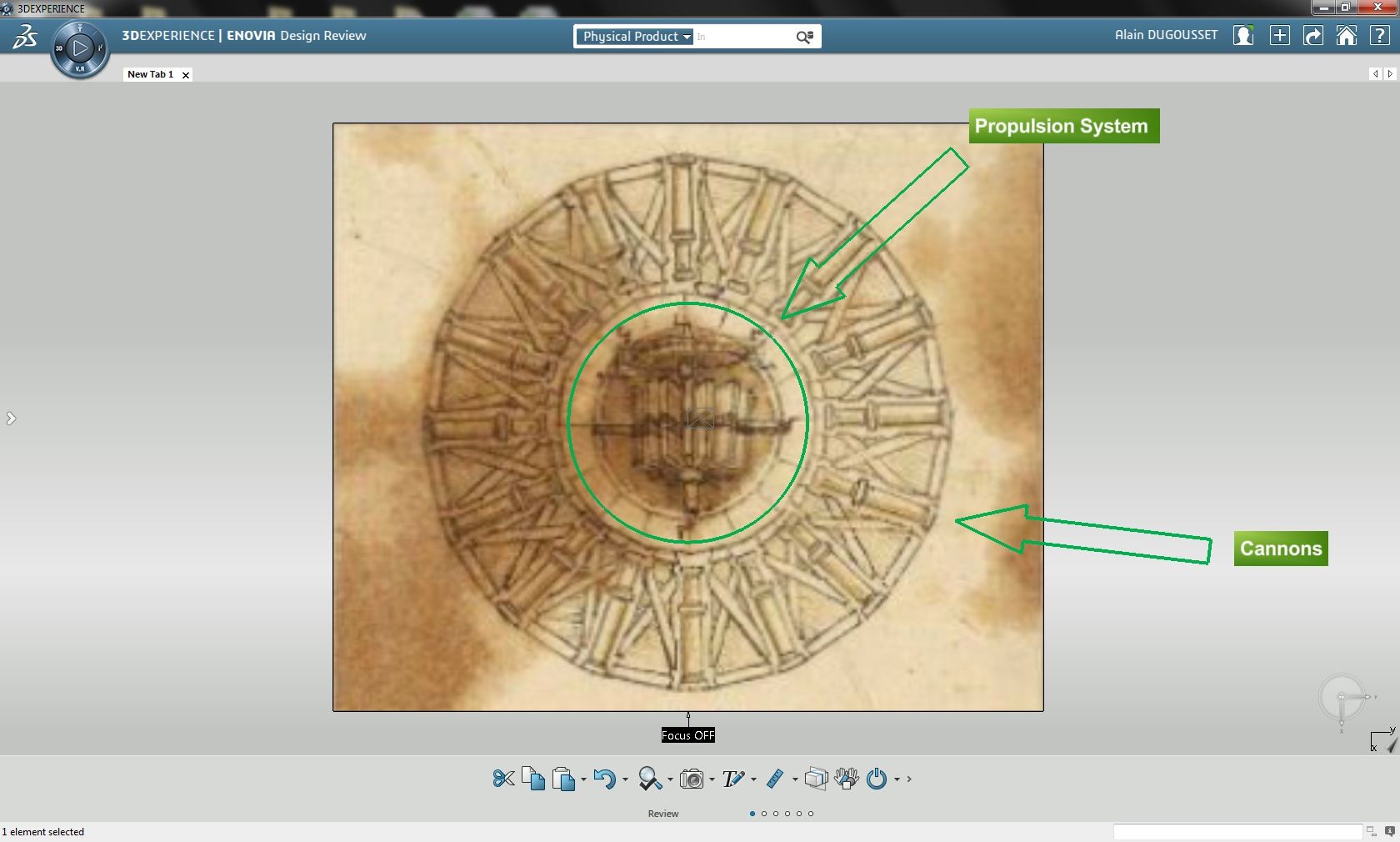
Battery deck.The idea of da Vinci, as follows from a top view, was to place 16 artillery pieces around the perimeter of the deck, and in the center - a rowing installation.
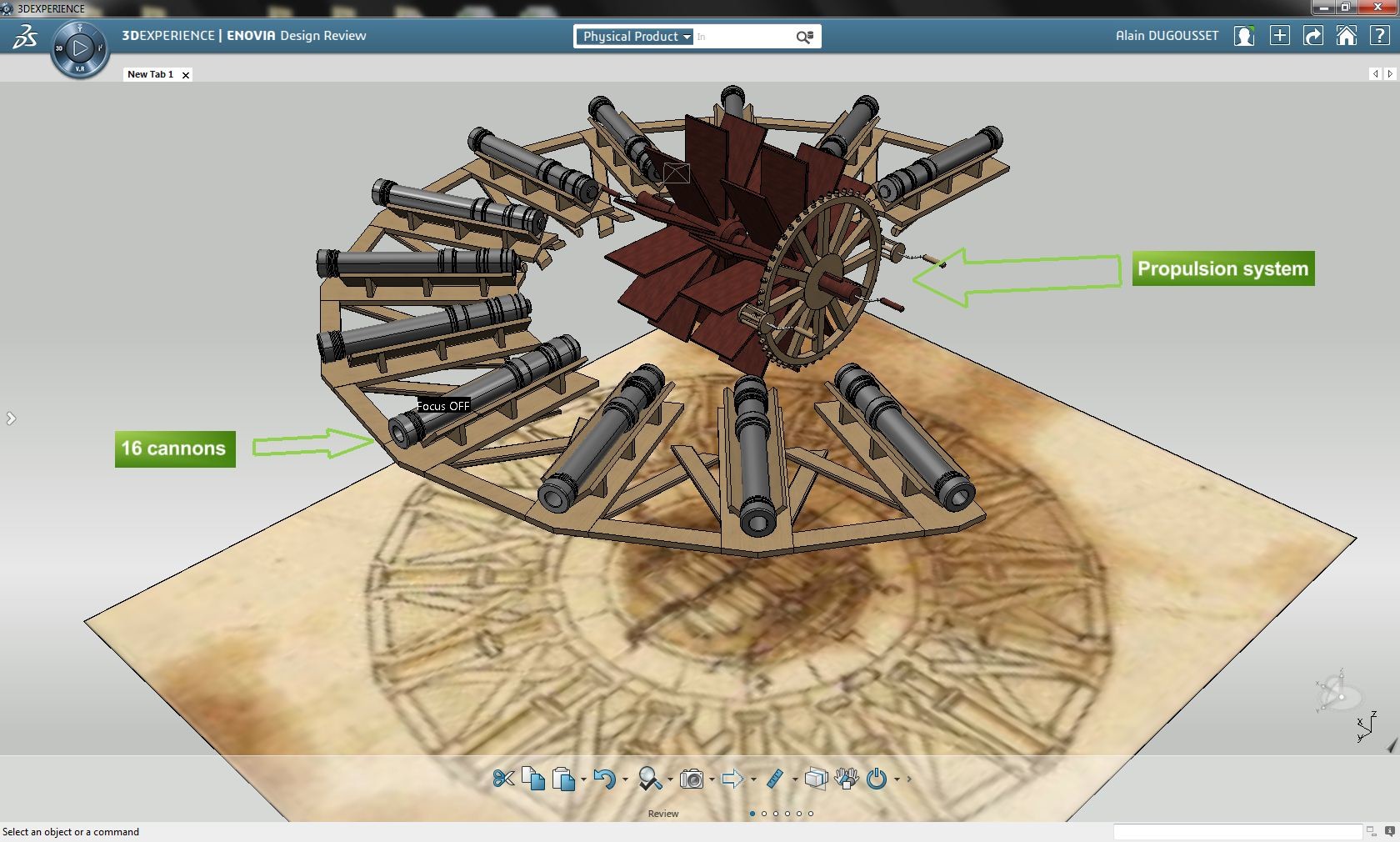
16 guns. Guided by what is depicted in one of the sections of the ship, Duguss placed military guns on V-shaped supports.

Rowing installation. A careful study of the top view showed that the installation includes:

It is clearly seen that the total number of handles is not 2, but as many as 5:
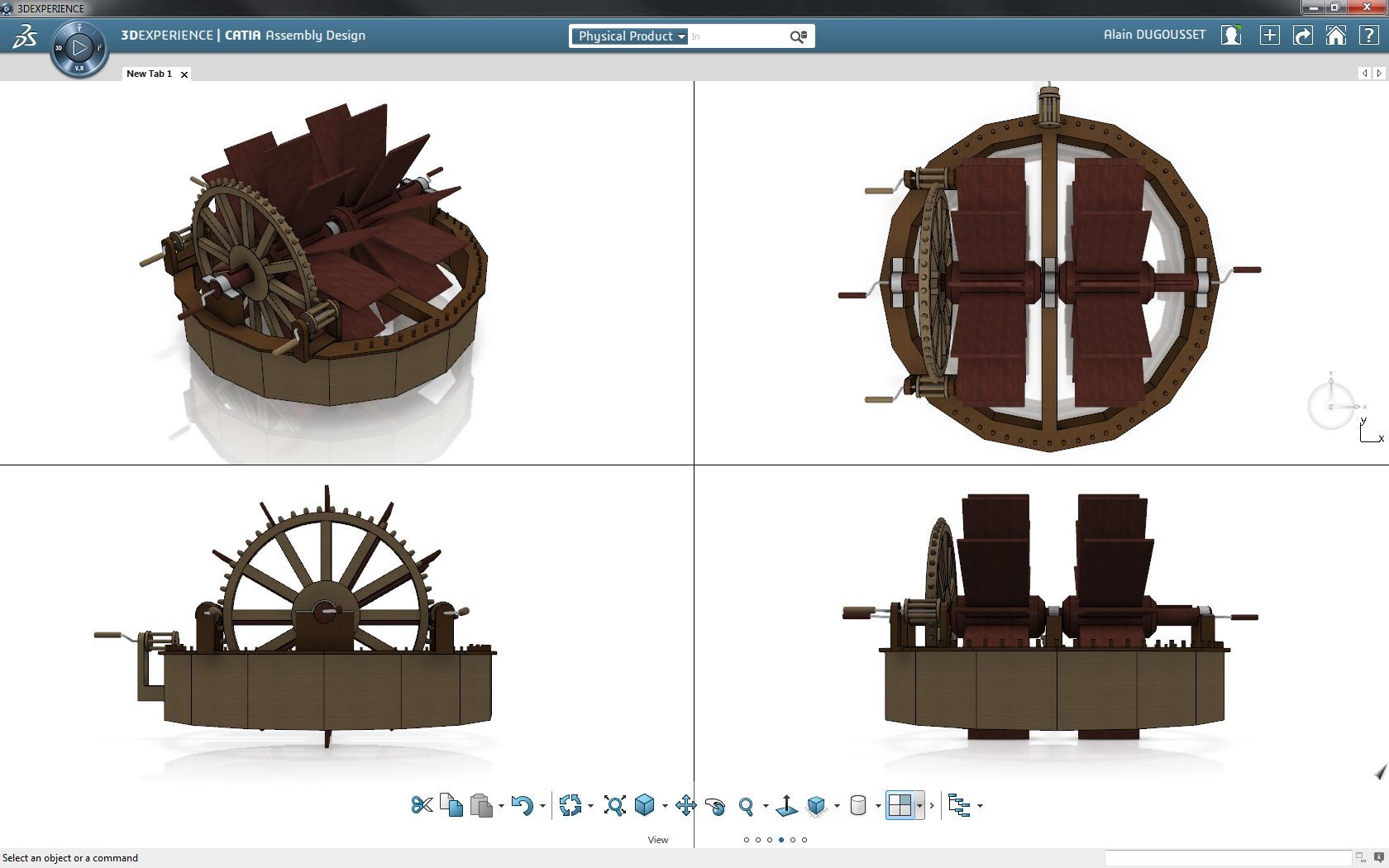
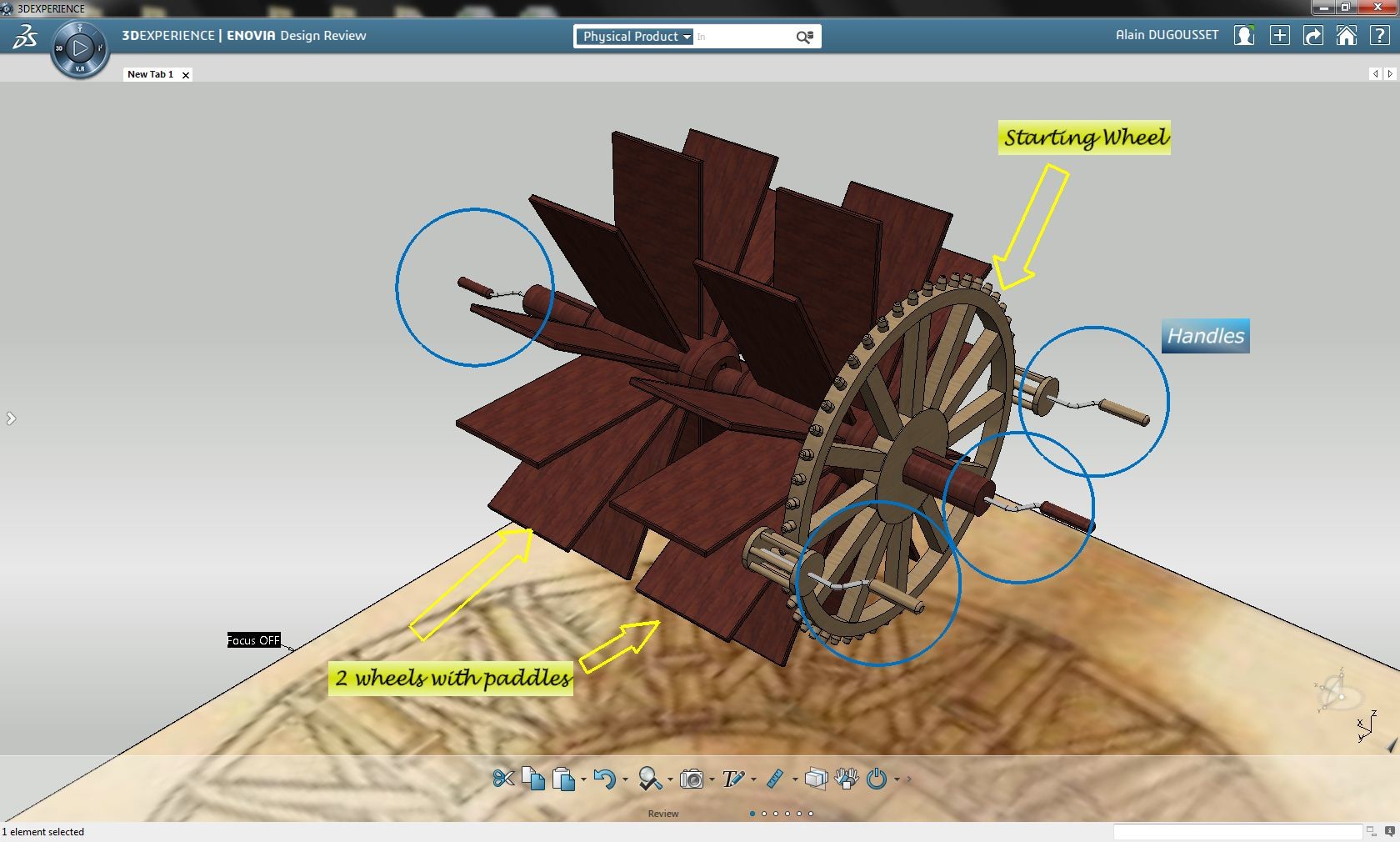
Motion control system. Reflecting on what the fifth hilt was thinking about, Dugusse looked at several other sketches of Leonardo da Vinci, and finally he came up with an idea that he later managed to test using the 3DEXPERIENCE platform. The expert suggested that it rotates the entire rowing unit around the vertical axis of the ship, and thus allows it to change direction.

Theoretically, the direction of movement could be controlled in another way, namely by placing the paddle wheels on separate axles. But in practice, this is impractical for the following reasons:
3D After the battery deck was modeled, the next step was to build a three-dimensional model. Since da Vinci in the model of the tank also arranged the guns uniformly around the circumference, Duguss built a virtual ship in 3D in the same way.
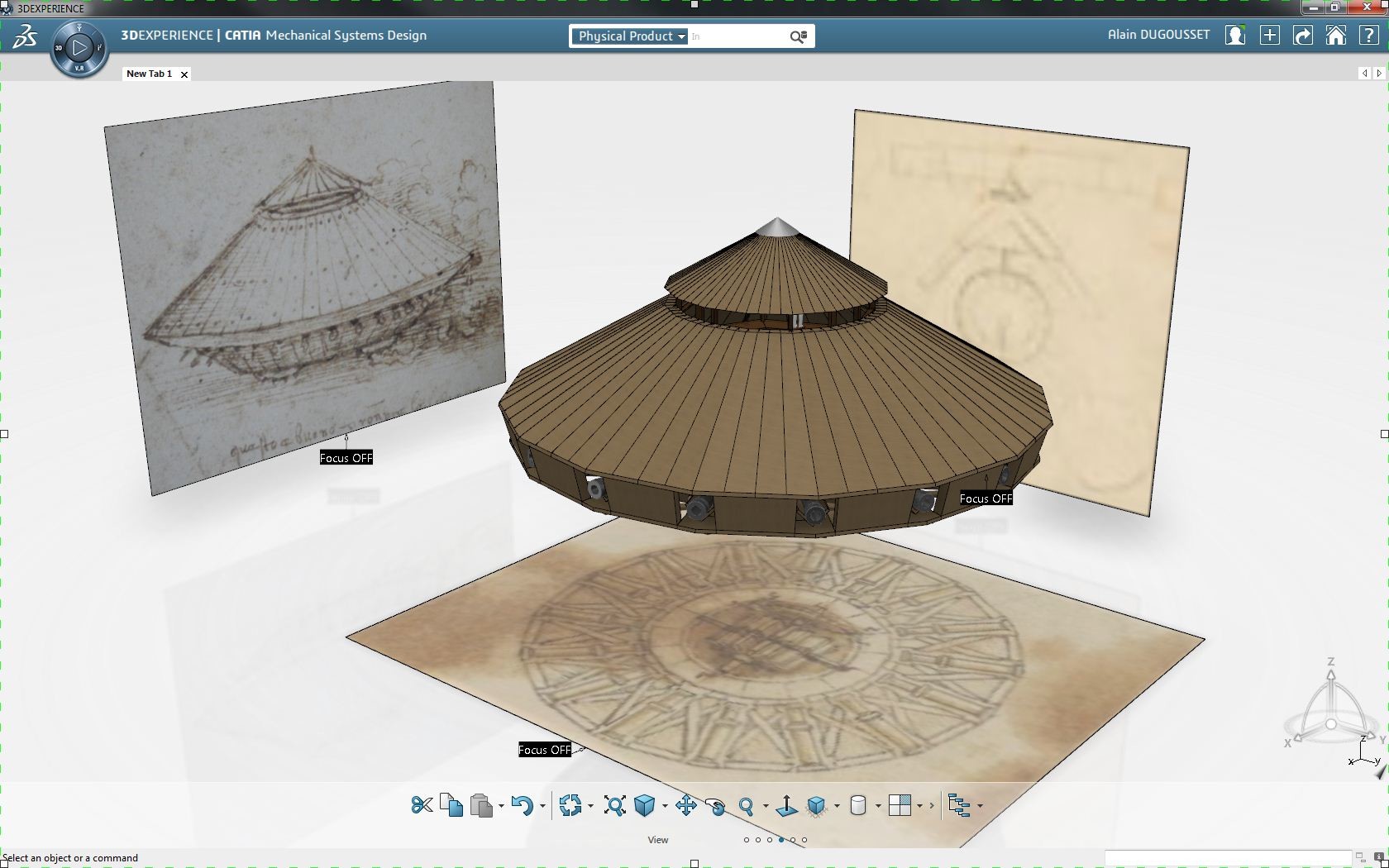
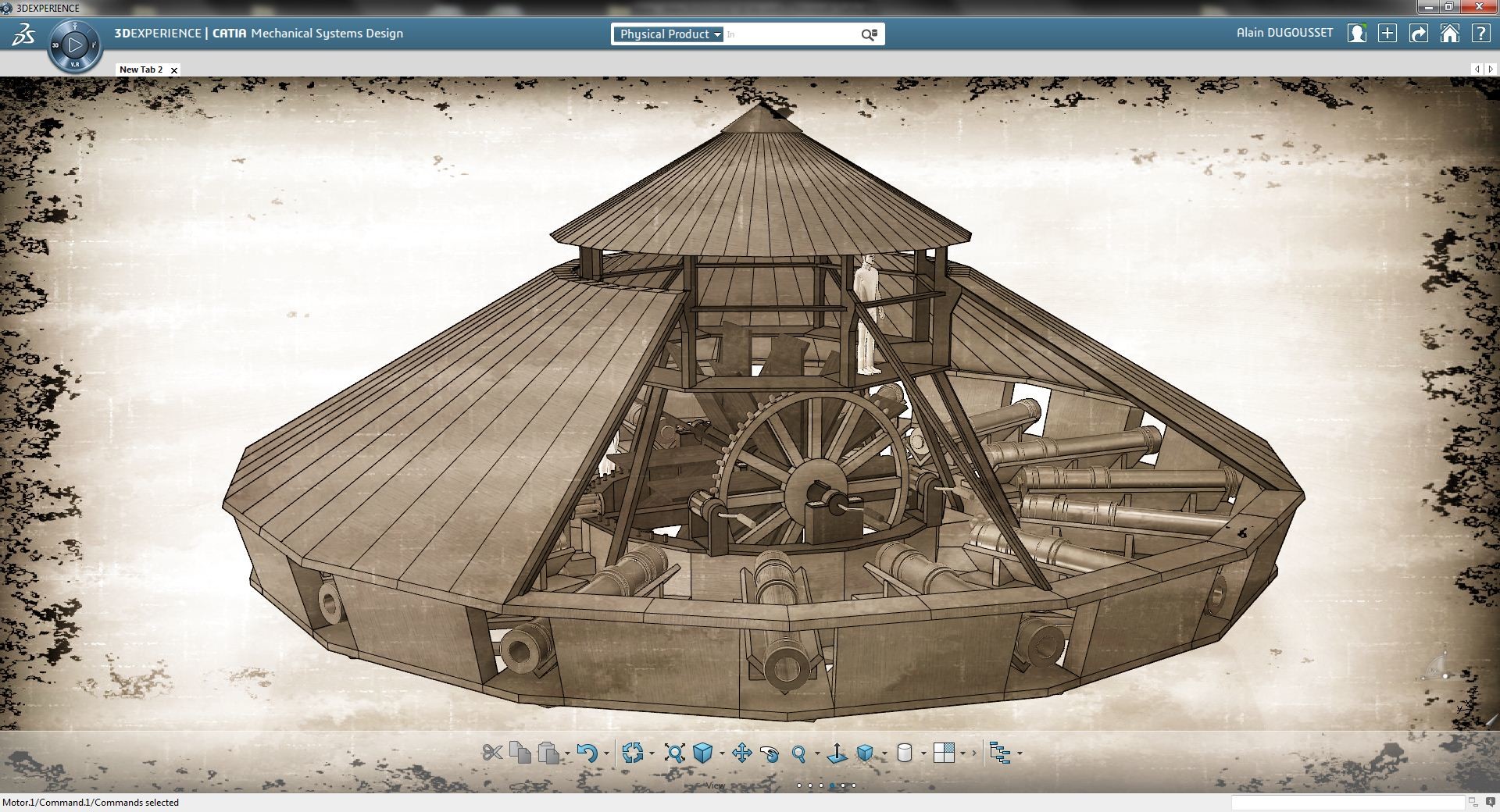
3D visualization of the ship of Leonardo da Vinci in a real environment.
Using the 3DEXPERIENCE platform and the new capabilities of the 3DEXCITE solution , Dugusse performed a realistic visualization of the 3D model of the ship on the water surface.


From Leonardo's ideas to modern ships. To make the picture more saturated and emphasize historical contrasts, Dugusse at the final stage added several more modern ships to it:

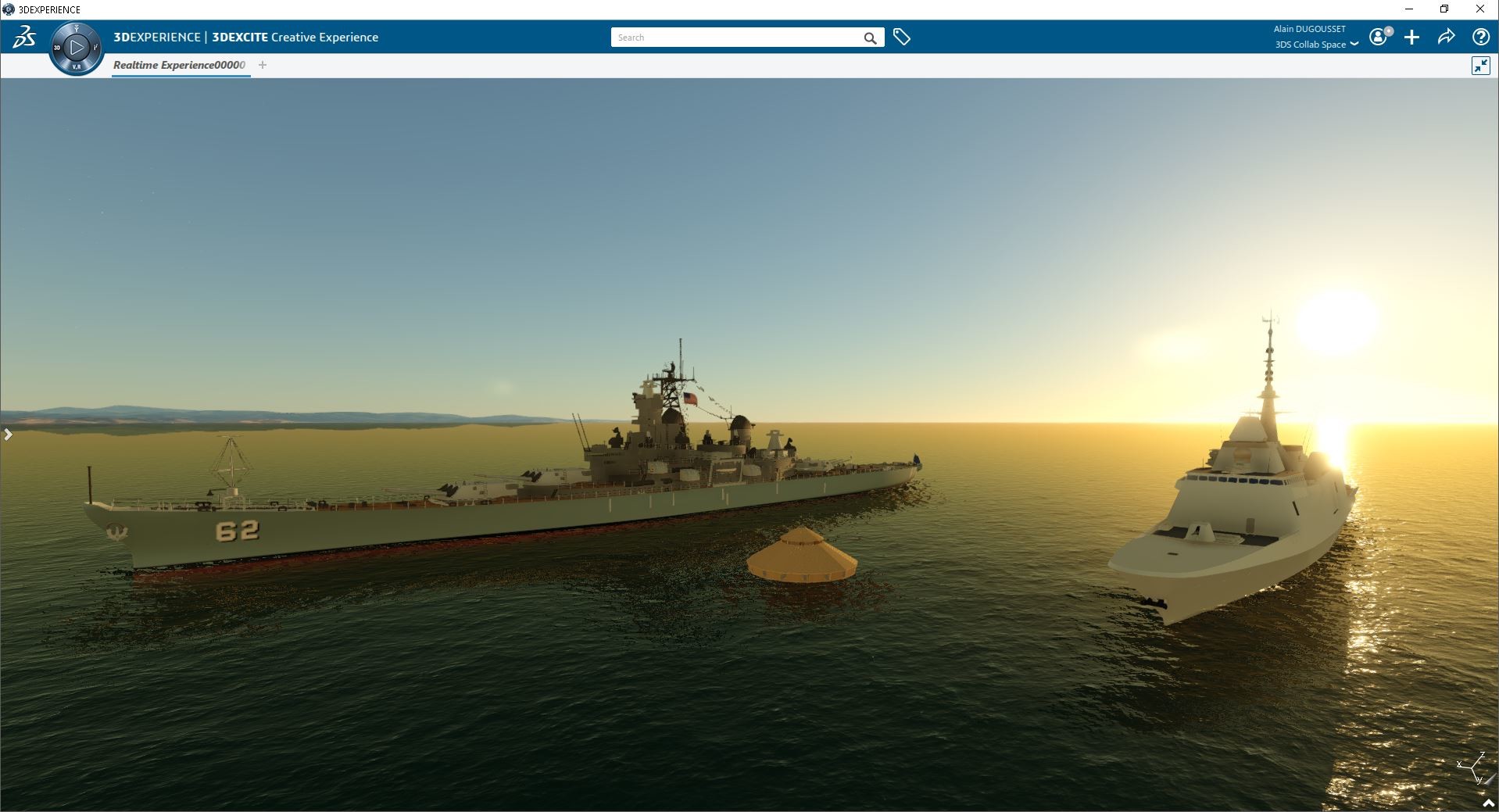
Without a doubt, many will be curious to compare the ideas of da Vinci, on the basis of the sketches of which we created a digital 3D-layout, and what the shipbuilding industry produces today.
Well, time goes on, technology is developing!
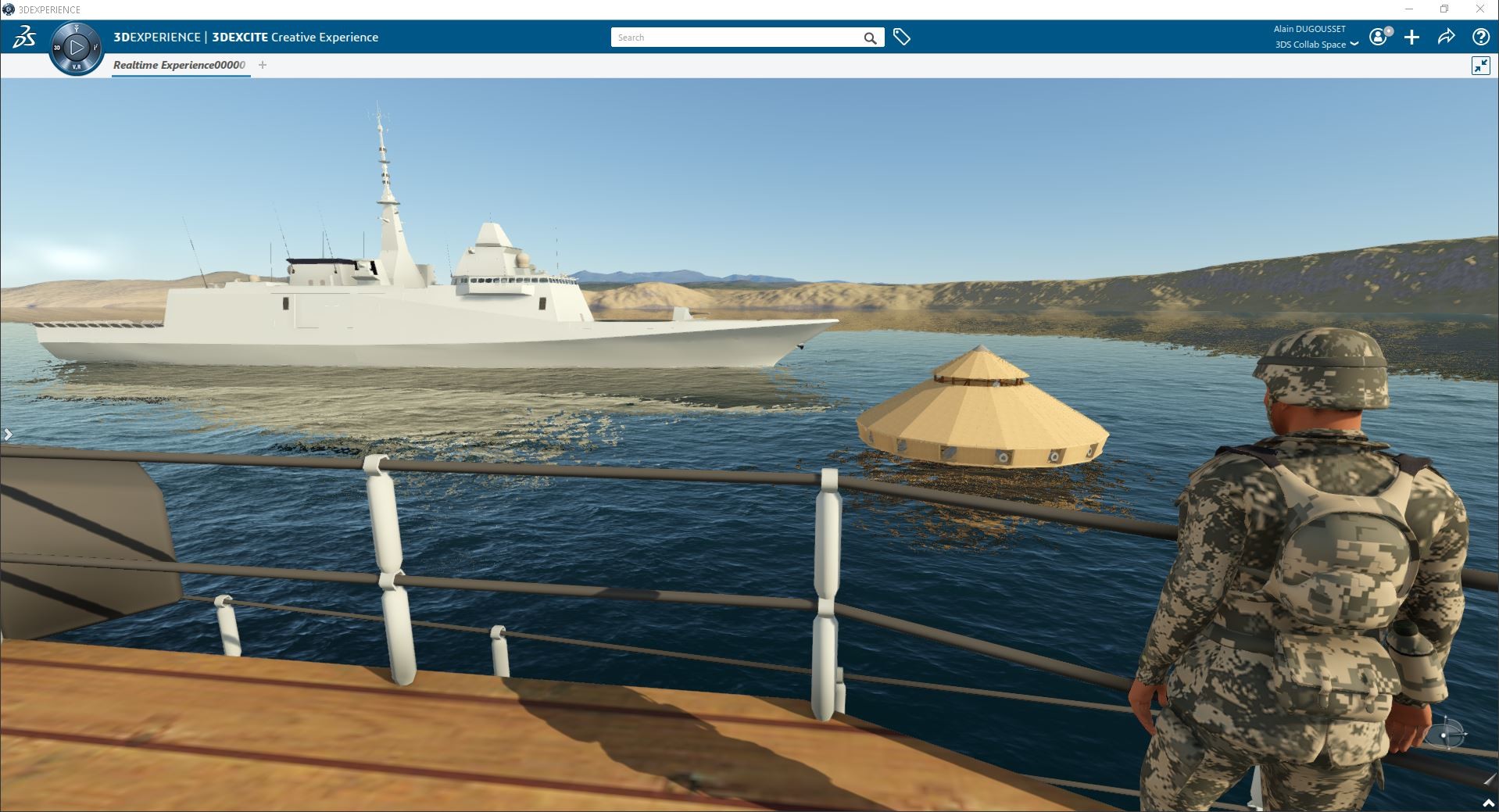
For a more detailed acquaintance with the CATIA functionality, we offer you to watch a webinar containing an excerpt of materials on the main improvements and innovations in 3DEXPERIENCE CATIA 2019 . In this review, information about new applications is announced, a number of improvements are considered. The review contains cutting-edge developments and tool proposals for designers, designers and system architects. Learn more about CATIA Dassault Systèmes official page. Subscribe to Dassault Systèmes on social networks: Facebook

Vkontakte
Linkedin
3DS Blog WordPress
3DS Blog on Render
3DS Blog on Habr
Today, his works can be seen in such famous museums as the Louvre Museum in Paris and the Uffizi Gallery in Florence. It was they who prompted Alain Duguss, PLM CATIA V5 / V6 expert at Dassault Systèmes, to participate in the 3DEXPERIENCE Lab project “Open Codex” , dedicated to the virtual recreation of Leonardo’s inventions.

Among the many sketches from the master’s heritage (an aircraft, a tank, a parachute, a helicopter, etc.), in the Italian archive of Piazza della Scala, Duguss found something interesting: a top view and several types of components of the structure, very similar to a warship.

However, these species do not give a final idea of how da Vinci saw the realization of his brainchild. To visualize the ship in 3D, it was decided to combine the found sketches with sketches of a similar model of the tank.

We will briefly talk about this project, which was carried out in CATIA and 3DEXCITE software products on the Dassault Systèmes 3DEXPERIENCE platform.
Concept. The first impression from the top view was that it was a prototype of a modern tank - but if you look closely at the central part, you can see the wheels with paddles, that is, Leonardo da Vinci probably conceived the structure as a means of transportation on water. 16 guns on board unequivocally confirmed that the ship was designed as a combat ship.

Battery deck.The idea of da Vinci, as follows from a top view, was to place 16 artillery pieces around the perimeter of the deck, and in the center - a rowing installation.

16 guns. Guided by what is depicted in one of the sections of the ship, Duguss placed military guns on V-shaped supports.

Rowing installation. A careful study of the top view showed that the installation includes:
- two main paddle wheels with vanes located on a common axis;
- one auxiliary wheel with two handles (on the same axis), giving the initial rotation to the main wheels.

It is clearly seen that the total number of handles is not 2, but as many as 5:

- 2 on the main axis for rotation of the main wheels;
- 2 to rotate the start wheel;
- and one more, the purpose of which at first was not entirely clear.

Motion control system. Reflecting on what the fifth hilt was thinking about, Dugusse looked at several other sketches of Leonardo da Vinci, and finally he came up with an idea that he later managed to test using the 3DEXPERIENCE platform. The expert suggested that it rotates the entire rowing unit around the vertical axis of the ship, and thus allows it to change direction.

Theoretically, the direction of movement could be controlled in another way, namely by placing the paddle wheels on separate axles. But in practice, this is impractical for the following reasons:
- even a small difference in the rotational speeds of the propeller wheels deflects the ship from a straight path;
- the start wheel on the sketch is only one, and it is not clear how to report the initial movement to another propeller wheel in this configuration.
3D After the battery deck was modeled, the next step was to build a three-dimensional model. Since da Vinci in the model of the tank also arranged the guns uniformly around the circumference, Duguss built a virtual ship in 3D in the same way.


3D visualization of the ship of Leonardo da Vinci in a real environment.
Using the 3DEXPERIENCE platform and the new capabilities of the 3DEXCITE solution , Dugusse performed a realistic visualization of the 3D model of the ship on the water surface.


From Leonardo's ideas to modern ships. To make the picture more saturated and emphasize historical contrasts, Dugusse at the final stage added several more modern ships to it:

- the multi-purpose frigate “Aquitaine” of the French Navy (still in service);
- battleship "New Jersey" of the US Navy (in the fleet from 1942 to 1991);
- battleship Bismarck of the German Navy (launched in 1939, sunk in 1941);
- The battleship Yamato of the Imperial Navy of Japan (launched in 1940, sunk in 1945) is one of the largest and most well-armed warships in history.

Without a doubt, many will be curious to compare the ideas of da Vinci, on the basis of the sketches of which we created a digital 3D-layout, and what the shipbuilding industry produces today.
Well, time goes on, technology is developing!

For a more detailed acquaintance with the CATIA functionality, we offer you to watch a webinar containing an excerpt of materials on the main improvements and innovations in 3DEXPERIENCE CATIA 2019 . In this review, information about new applications is announced, a number of improvements are considered. The review contains cutting-edge developments and tool proposals for designers, designers and system architects. Learn more about CATIA Dassault Systèmes official page. Subscribe to Dassault Systèmes on social networks: Facebook

Vkontakte
3DS Blog WordPress
3DS Blog on Render
3DS Blog on Habr
